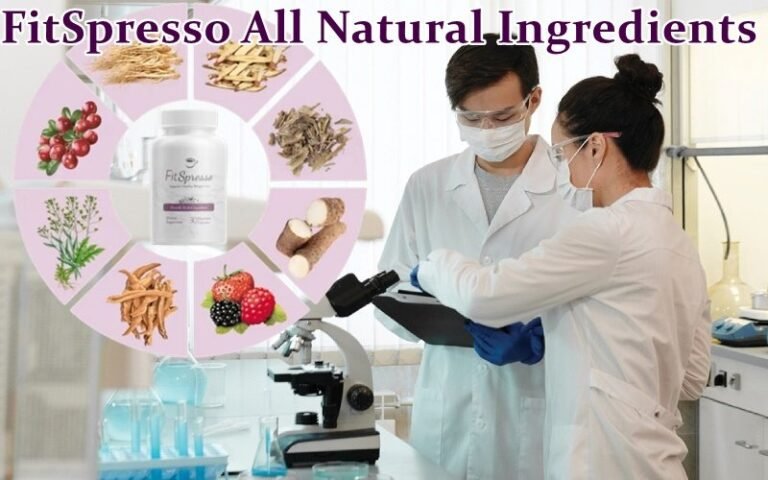Capsicum annum: Health Benefits, Mechanisms of Action, and Bioavailability Challenges
Capsicum annum, one of the most widely consumed pepper species globally, encompasses a broad spectrum of varieties ranging from sweet bell peppers to pungent chili peppers. Known for its rich content of capsaicinoids, carotenoids, flavonoids, and essential vitamins, Capsicum annum offers numerous health benefits. Scientific studies have linked its consumption to antioxidants, anti-inflammatory, anti-obesity, cardiovascular protection, and potential anticancer effects. Despite its promising bioactivities, challenges such as poor bioavailability and variable individual responses remain significant barriers. This review explores the mechanisms underlying Capsicum annum’s therapeutic actions, documented health benefits, current bioavailability issues, and prospects for future health and nutrition science applications.

Introduction
Capsicum annum is a staple ingredient in many global cuisines, prized for its flavor and impressive nutritional and pharmacological properties. Belonging to the Solanaceae family, it shares lineage with other important crops such as tomatoes and potatoes. Capsicum annum varieties range widely in their capsaicin content—from the mild sweetness of bell peppers to the intense heat of cayenne and jalapeños.
In traditional medicine systems, such as Ayurveda and Traditional Chinese Medicine (TCM), Capsicum anuum has long been employed for pain relief, digestion enhancement, and circulatory improvement. Modern pharmacological research has validated many of these traditional uses, highlighting the bioactive potential of this plant.
This paper aims to provide a comprehensive overview of Capsicum annum’s bioactive compounds, their mechanisms of action, their health benefits, the associated challenges, and strategies for overcoming these challenges to harness its therapeutic potential fully.
Mechanisms of Action
1. Capsaicinoid Activity: Interaction with TRPV1
Capsaicin binds selectively to the transient receptor potential vanilloid 1 (TRPV1) receptor, a non-selective cation channel predominantly expressed in sensory neurons. Activation of TRPV1 by capsaicin results in an influx of calcium and sodium ions, leading to neuron depolarization and heat or burning sensation.
Chronic exposure to capsaicin desensitizes TRPV1 receptors, reducing pain sensation, a mechanism exploited in topical analgesics for conditions such as postherpetic neuralgia and osteoarthritis.
Moreover, TRPV1 activation influences metabolism by stimulating the sympathetic nervous system, enhancing thermogenesis, and increasing energy expenditure.
2. Antioxidant Mechanisms: ROS Scavenging and Enzyme Activation
Capsicum annum is a potent source of dietary antioxidants, primarily due to:
- Carotenoids such as capsanthin, beta-carotene, lutein, and zeaxanthin.
- Vitamin C (ascorbic acid) — bell peppers contain more vitamin C per gram than oranges.
- Vitamin E and flavonoids — such as quercetin and luteolin.
These compounds neutralize harmful free radicals and reduce oxidative stress, a critical contributor to aging and chronic diseases. Additionally, phenolic compounds from Capsicum annum activate nuclear factor erythroid 2–related factor 2 (Nrf2), a transcription factor that upregulates the expression of endogenous antioxidant enzymes like superoxide dismutase (SOD) and catalase.
3. Anti-inflammatory Effects: Suppression of Pro-inflammatory Signaling
Inflammation underpins many chronic diseases, including arthritis, diabetes, and cancer. Capsaicinoids inhibit the activation of key pro-inflammatory transcription factors such as:
- NF-κB, which regulates cytokine production (TNF-α, IL-6).
- COX-2 is an enzyme involved in prostaglandin synthesis.
Capsicum annum extracts have been shown to reduce inflammatory markers in vitro and animal models, suggesting the potential for managing inflammatory conditions naturally.
4. Cardiovascular Effects: Blood Pressure and Lipid Modulation
Capsaicin induces vasodilation by promoting nitric oxide (NO) production in endothelial cells and inhibiting calcium influx into vascular smooth muscle cells. This leads to lowered blood pressure and improved vascular function.
Moreover, Capsicum annum reduces serum cholesterol and triglyceride levels by enhancing hepatic LDL receptor expression and inhibiting cholesterol absorption in the intestines.
5. Metabolic Effects: Anti-obesity and Anti-diabetic Potential
Capsaicin increases fat oxidation and energy expenditure by activating brown adipose tissue (BAT). Clinical trials have demonstrated that capsaicin supplementation can reduce appetite and increase satiety, contributing to lower energy intake.
Additionally, Capsicum annum improves insulin sensitivity and glucose homeostasis by modulating adipokine secretion (e.g., increasing adiponectin) and reducing systemic inflammation—two significant factors in developing type 2 diabetes.
Health Benefits
1. Pain Management and Neuropathic Relief
Topical formulations containing capsaicin (0.025%–8%) are FDA-approved for managing neuropathic pain conditions. Capsaicin patches offer sustained pain relief for conditions like:
- Postherpetic neuralgia
- Diabetic neuropathy
- Osteoarthritis-related joint pain
Desensitization of nociceptors and depletion of substance P underlie the analgesic action.
2. Weight Loss and Energy Balance
Several randomized controlled trials (RCTs) have reported that daily capsaicin consumption (2–10 mg/day) significantly increases postprandial energy expenditure and promotes fat oxidation. A meta-analysis published in Appetite Journal found that capsaicinoid supplementation significantly reduced body fat percentage without significant adverse effects.
The ability of Capsicum annum to modulate appetite-regulating hormones such as ghrelin and GLP-1 further supports its use in weight management strategies.
3. Cardiovascular Protection
In a population-based study conducted in Italy (PLOS ONE, 2019), regular chili pepper consumers exhibited a 23% reduced risk of all-cause mortality and a 34% reduction in cardiovascular disease mortality compared to non-consumers.
Capsicum annum’s effects on reducing arterial stiffness, improving lipid profiles, and inhibiting platelet aggregation make it a promising dietary intervention for cardiovascular health.
4. Cancer Prevention and Adjunctive Therapy
Preclinical studies demonstrate that capsaicin can induce apoptosis in multiple cancer cell lines, including prostate, breast, colon, and gastric cancers, without significant effects on normal cells.
Mechanisms include:
- Induction of mitochondrial dysfunction
- ROS-mediated DNA damage
- Inhibition of angiogenesis and metastasis
- Modulation of signaling pathways such as PI3K/Akt/mTOR
However, dosage is critical. Extremely high doses have raised concerns about potential carcinogenic effects in some rodent studies, emphasizing the need for human clinical trials to establish safe therapeutic ranges.
5. Gastrointestinal Benefits
Contrary to the myth that spicy foods cause ulcers, Capsicum annum promotes gastrointestinal health by:
- Stimulating mucosal blood flow
- Enhancing mucus production
- Inhibiting H. pylori colonization
Capsaicin protects against NSAID-induced gastric damage and supports overall gut integrity in moderate amounts.
6. Immune System Enhancement
Vitamin C-rich foods like Capsicum annum boost immune function by:
- Enhancing the activity of neutrophils and natural killer (NK) cells
- Supporting skin and epithelial barrier defenses
- Reducing the severity and duration of respiratory infections
Carotenoids like beta-carotene also improve immune responses by modulating T-cell and macrophage functions.
Challenges and Bioavailability
1. Stability Issues
Capsaicinoids degrade upon exposure to light, oxygen, and heat, complicating their inclusion in shelf-stable supplements or processed foods. Microencapsulation and protective packaging are strategies under investigation to improve stability.
2. Low Systemic Absorption
Due to their lipophilic nature, capsaicinoids have poor solubility in aqueous environments, resulting in low gastrointestinal absorption. Rapid first-pass metabolism in the liver further reduces systemic availability.
Strategies such as co-administration with lipids, permeation enhancers, and novel nano-formulations (e.g., lipid nanoparticles) are being researched to enhance bioavailability.
3. Tolerability Issues
Gastrointestinal irritation remains a limiting factor in capsaicinoid therapy. Even small doses may cause discomfort in sensitive individuals, reducing adherence to supplementation regimens.
Gradual titration and use of non-pungent analogs like capsinoids (naturally occurring in some non-pungent varieties) offer potential solutions.
4. Genetic Variability in Response
Single-nucleotide polymorphisms (SNPs) in TRPV1 and metabolic enzymes influence individual sensitivity to capsaicin. Future research into nutrigenomics and personalized nutrition may allow tailoring Capsicum annum supplementation based on genetic profiles.
Conclusion
Capsicum annum represents a potent, natural source of bioactive compounds with wide-ranging health benefits, from metabolic and cardiovascular improvements to pain management and immune support. Mechanistic studies support its roles in antioxidant defense, inflammation modulation, and energy metabolism regulation.
Nonetheless, innovative delivery systems and personalized approaches must address limitations such as bioavailability hurdles, tolerability concerns, and individual variability. Further human clinical trials are warranted better to define optimal dosing, safety, and efficacy parameters.
Incorporating Capsicum annum into a balanced, whole-food diet appears safe for most individuals and offers a promising strategy for enhancing overall health and disease prevention naturally.
References
- Arora, R., Gill, N. S., Chauhan, G., & Rana, A. C. (2011). An overview about versatile Capsicum: The king of spices. International Journal of Pharmaceutical Sciences Review and Research, 8(2), 168-177.
- Luo, X. J., Peng, J., Li, Y. J. (2011). Recent advances in the study of capsaicinoids and capsinoids. European Journal of Pharmacology, 650(1), 1-7.
- Srinivasan, K. (2016). A review of the biological activities of red pepper (Capsicum annum) and its pungent principle capsaicin. Critical Reviews in Food Science and Nutrition, 56(9), 1488-1500.
- Araya, H., et al. (2008). Effect of Capsicum consumption on energy metabolism in humans: a review. Journal of Medicinal Food, 11(4), 684–690.
- Baboota, R. K., et al. (2014). Capsaicin-induced transcriptional changes in the hypothalamus and gastrocnemius muscles are linked to appetite suppression and thermogenesis. Journal of Nutritional Biochemistry, 25(10), 951-962.
- Reyes-Escogido, M. L., Gonzalez-Mondragon, E. G., & Vazquez-Tzompantzi, E. (2011). Chemical and pharmacological aspects of capsaicin. Molecules, 16(2), 1253-1270.
- Sancho, R., et al. (2002). Immunosuppressive activity of capsaicinoids: capsaicin inhibits T cell activation and cytokine production by a direct action on T cells. Journal of Pharmacology and Experimental Therapeutics, 301(2), 646-653.
- Bonaccio, M., et al. (2019). Chili pepper consumption and mortality in Italian adults: A prospective cohort study. PLOS ONE, 14(12), e0225474.





